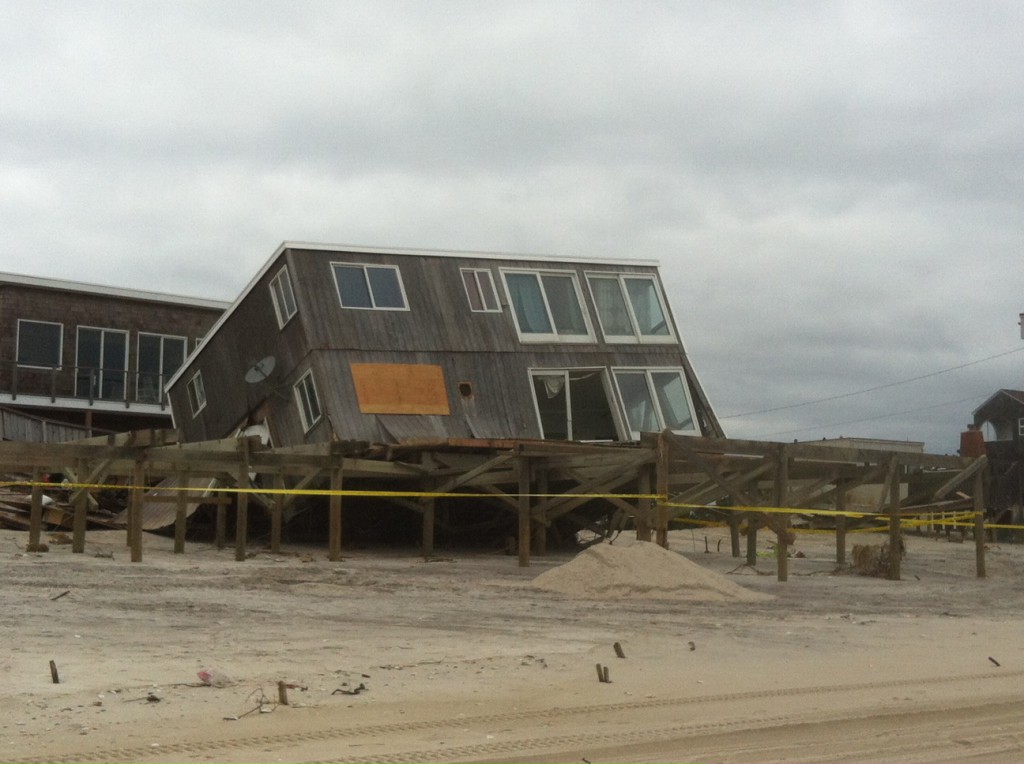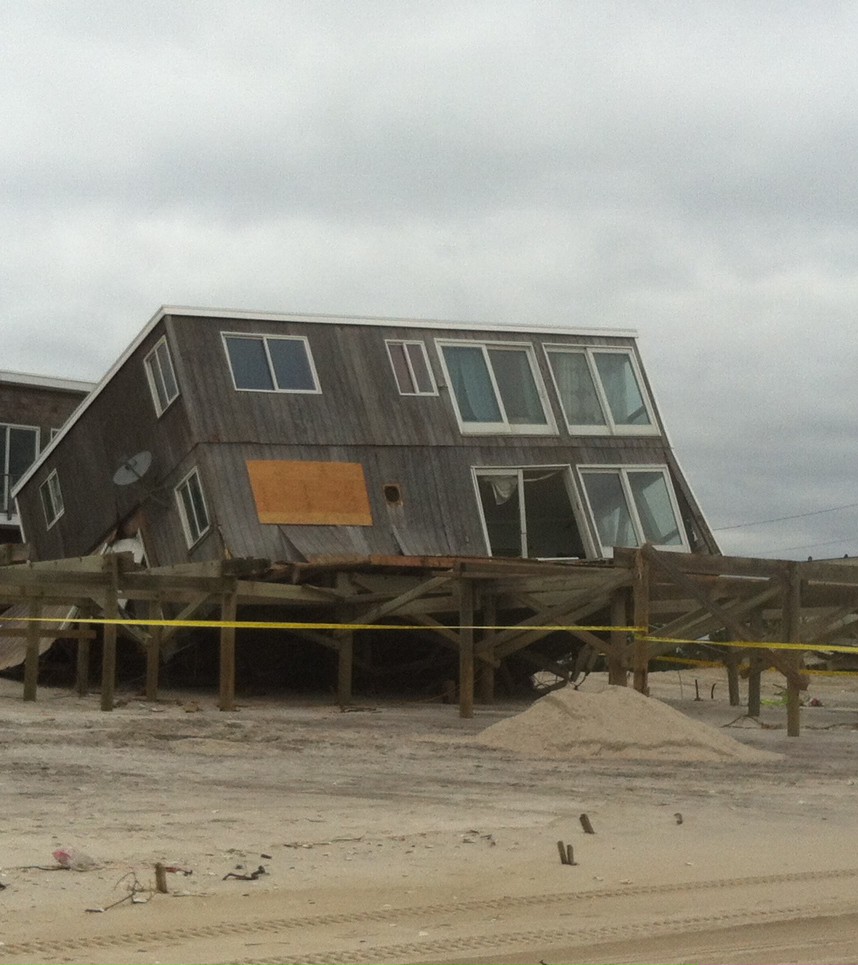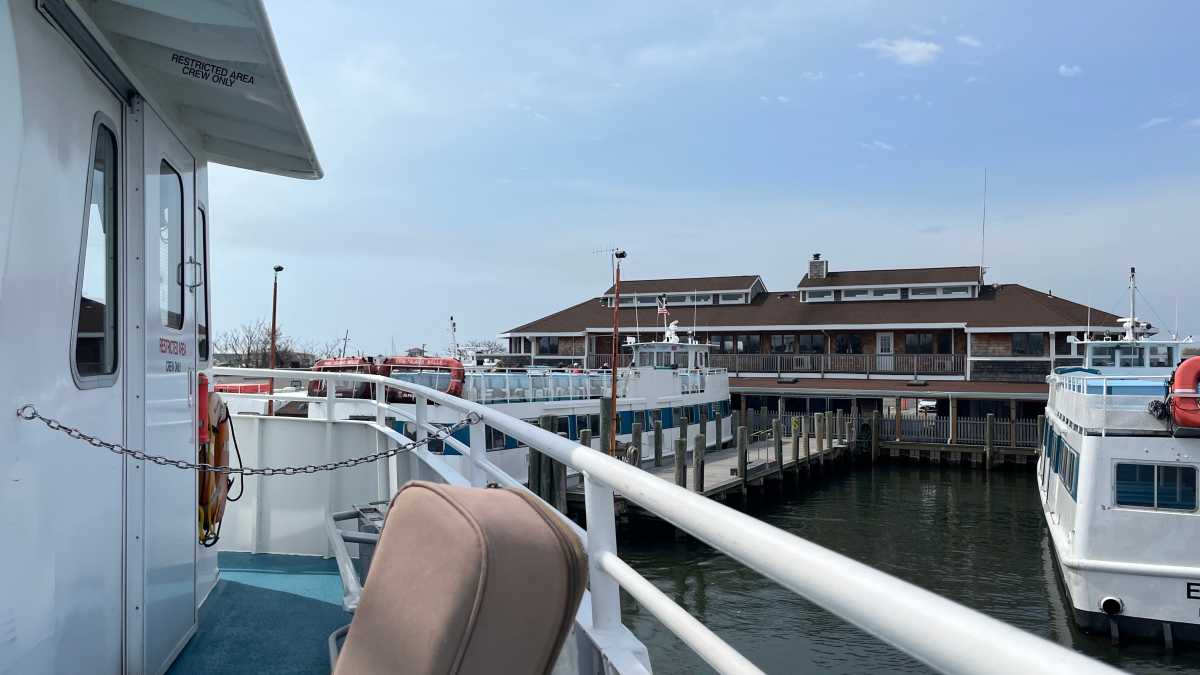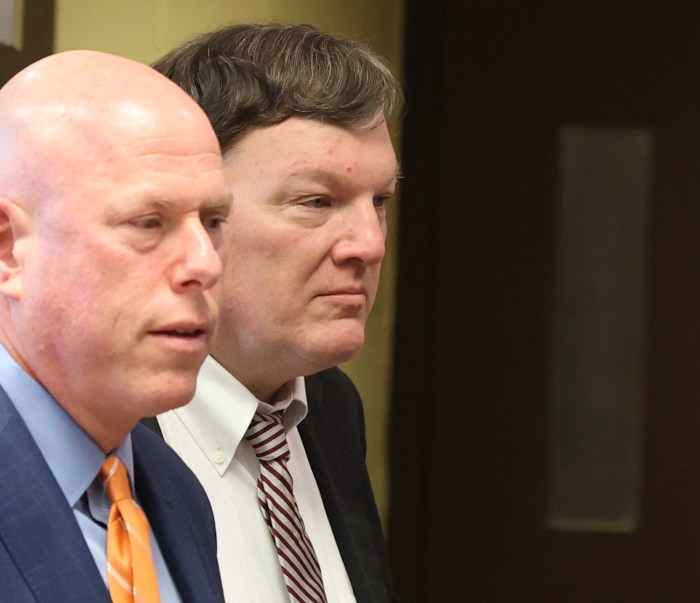
In a week that saw January temperatures on Long Island range from the single digits to an unseasonable 54 degrees, the causes and effects of extreme weather drew the chairman of the state Assembly’s standing committee on environmental conservation, Assemb. Robert Sweeney (D-Lindenhurst), to Babylon Town Hall on Wednesday, where he held a public hearing on what steps the government should take in the wake of the destruction left behind by Superstorm Sandy and the increasing likelihood that the future holds worse storms to come.
In public testimony, Ellen Mecray, regional climate services director of the National Oceanic and Atmospheric Administration, cited a “statistically significant trend” in extreme weather patterns since the 1970s and said that “what we’re seeing is the atmosphere on steroids.”
After she recommended that our region get better prepared, Sweeney asked her, “Prepare for the worst and hope for the best, basically?” “Yes,” Mecray replied.
As Assemb. Fred Thiele (D-Sag Harbor) pointed out—mentioning that his Assembly district has more coastline than any other in the state—the resources are “finite,” especially at the local level, yet the need for them is only growing.
But the federal government, warned Dorian Dale, Suffolk County’s director of sustainability, may be in retreat on financing the necessary preparation and remediation efforts, so the market place may wind up imposing changes in public behavior that could mitigate the effects of the rising sea levels and the increasing frequency of flooding from bad storms. For example, Dale said, flood insurance rates could rise significantly—assuming the homeowner still qualifies—and coastal property values may sink, making it harder to get a mortgage, let alone refinance one.
So, in the long term, the question of whether to sink more funds into restoring the flood-damaged communities may become moot as residents move away, but in the short term, he sees his neighbors in West Gilgo Beach “in a frantic rush to rebuild in a bad way.” In other words, using sheetrock instead of Durock, which is waterproof and mold resistant, and putting their electrical outlets and fuse boxes in the same vulnerable place they were when Sandy’s surge came into their homes.
Referring to the Netherlands, which has had a history of keeping the ocean at bay, Dale said that in Europe there is a “collective effort” to share resources, whereas in the United States people tend to go it alone. “At this point in time, we are all first responders.” Unless, he said, people “change the mindset.”
Rezoning and upholding building codes were suggested at the hearing by R. Larry Swanson, associate dean of the school of marine and atmospheric sciences at Stony Brook University. “On Long Island variances are a dime a dozen,” he exclaimed.
Swanson disagreed with Jay Tanski, coastal processes and facilities specialist at New York Sea Grant, a state and federal funded agency that researches marine issues, on how fast nature may fill in the Fire Island breach and what effect the inlet created by Sandy may be having on the Great South Bay. Swanson thinks the breach could close in months or a year at most, and should be left alone because the influx of seawater is helping the bay flush out some of the pollution that has accumulated there. Tanski said he believes the inlet will “close by itself” but it could take a decade, and by then the salinity levels of the bay could irrevocably alter the ecosystem.
Both scientists reiterated the need for closer monitoring of Fire Island and the bay itself, given that present government-funded research is “running on fumes,” as Swanson told the Press after he spoke at the hearing.
Of equal concern is the issue of storm debris that may come back ashore in the spring when the wind changes direction, Swanson warned the Assembly committee, and it could contain nails, shingles, home heating oil tanks, and other toxic materials. He compared the situation to the discovery of medical waste, such as used syringes, that washed up on the Island’s beaches two decades ago and kept vacation crowds away for years after the mess was cleaned up. “Be vigilant,” he urged local communities.
Oil slicks in the water from storage tanks uprooted by the storm and ash from open-air incinerators of trees and other waste left from Sandy were among the many concerns raised by Adrienne Esposito, executive director of the Citizens Campaign for the Environment.
Among the recommendations she presented the committee, she proposed that the sewage treatment plants be raised above predicted tidal surge levels, that the state use FEMA money for that purpose, and that the state provide money to the Department of Environmental Conservation to monitor the quality of the water in the western bays where the raw and partially treated sewage was the worst after the storm struck.
On Long Island, she said, “People swim everywhere,” not just the beaches on the Ocean.
Rebuilding without thinking about the future means repeating the mistakes of the past, she said. “It sets us up for another disaster!” she exclaimed.
Sweeney nodded in appreciation. He’d held a previous hearing on this issue on Jan. 16 in Manhattan. No bill is planned at this time but that could change. Sweeney has been a prominent proponent of efforts in the state to reduce greenhouse gas emissions and promote clean energy. What will come of his committee’s efforts to stop the weather remains to be seen.



































